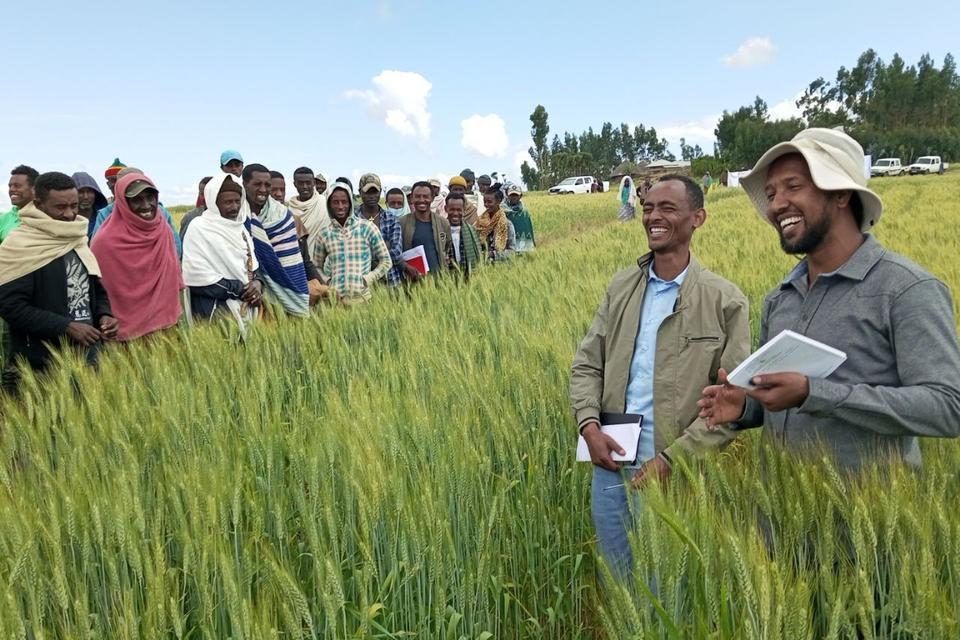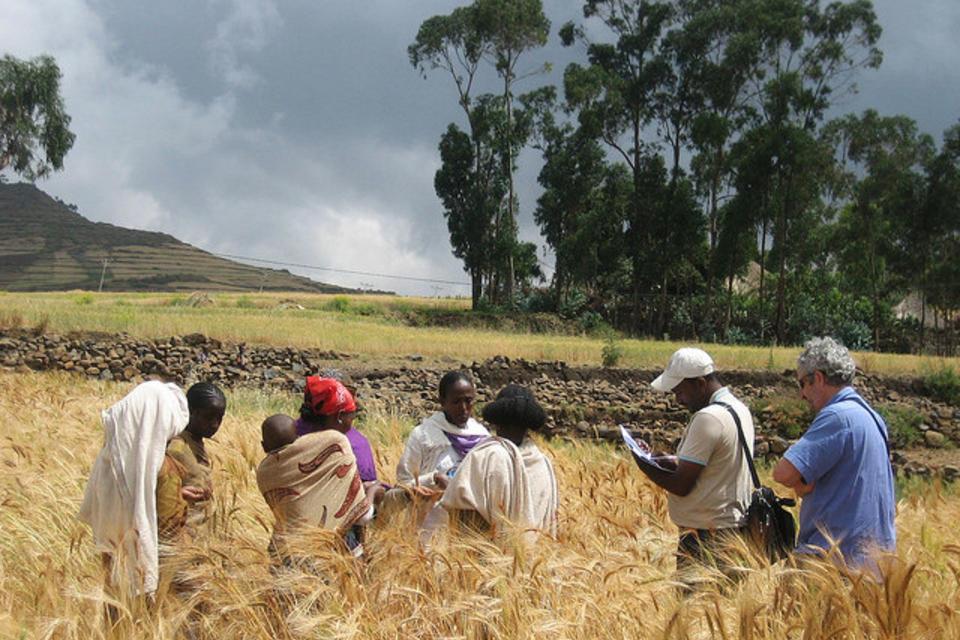Research Articles Smarter Fertilizer: AI-Powered Recommendations Boost Wheat Yields in Ethiopia

A new study in Ethiopia is transforming fertilizer use for wheat farmers. By harnessing the power of machine learning, researchers are creating site-specific fertilizer recommendations that are leading to significantly higher yields, profit and resource efficiency.
Just like humans need a balanced diet, plants require specific nutrients from the soil to thrive. However, a one-size-fits-all approach to fertilizer application often falls short. Blanket recommendations based on regional averages may work for some crops and farms, but certainly not for all – leading to wasted resources and suboptimal yields. This is especially true in Ethiopia, where wheat is a staple crop. Despite being Africa's second-largest producer, with a harvest of 7 million tons in 2022 (ranking 18th worldwide), the country's average wheat yield falls far short of its potential (6–7 tons per hectare), hovering around 2.6 tons/ha. This gap between potential and reality is largely due to inefficient and non-specific fertilizer use.
DID YOU KNOW? FACTS ON WHEAT (Source: FAOSTAT)
- Egypt (9.7 million tons), Ethiopia (7 M tones) and Algeria (3 M t) are the largest wheat producers in Africa.
- By 2022, more than 800 million tones of wheat were produced worldwide.
- The average yield worldwide is 3.68 tons/ha.
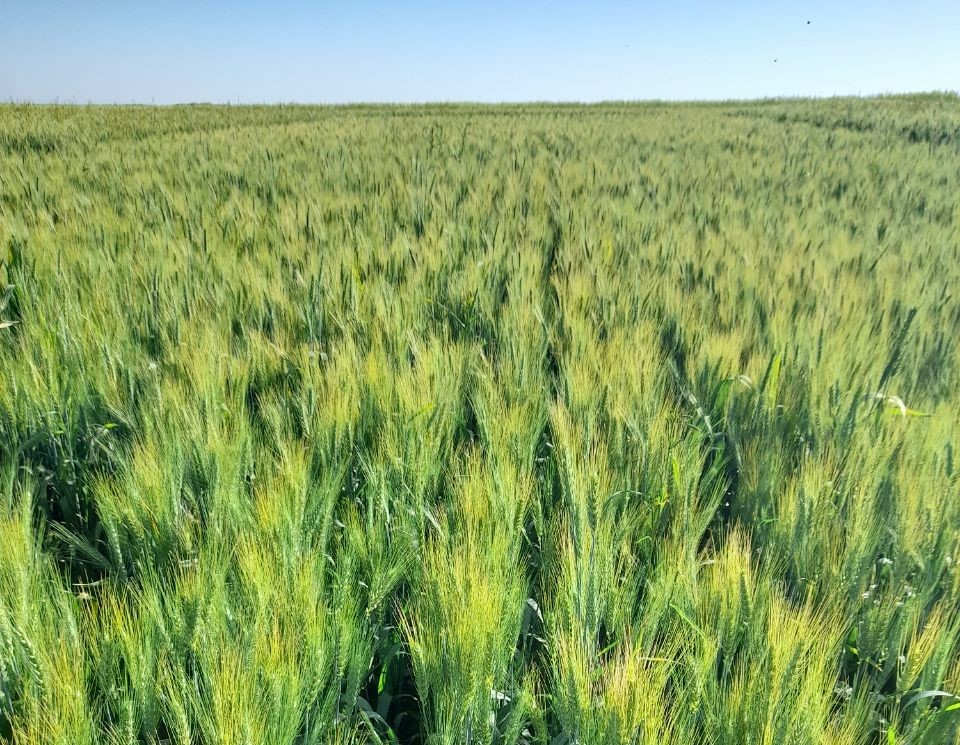
To address this challenge, researchers from the Alliance of Bioversity International and CIAT, along with partners including the German cooperation 'Digital Green', the Ethiopian Institute of Agricultural Research and the Ministry of Agriculture, embarked on a groundbreaking study. Their goal was to leverage the power of machine learning (ML) to create site-specific fertilizer recommendations (SSFRs) for Ethiopian wheat farmers.
The researchers started by gathering a massive dataset on crops' response to applied nutrients through Coalition of the Willings. Approximately 20,000 observations were collected on wheat response to different nutrient types and rates across diverse soil, climate and farming systems. This dataset was used - together with soil and climate co-variates from spatial data sources - to adapt a machine learning algorithm that can predict site-specific fertilizer recommendations. This algorithm - a sophisticated computer program - was trained to identify patterns and relationships between wheat yield, nitrogen, phosphorus, sulfur, and various soil and climate factors. Seasonal climatic features were obtained from climate models and used to develop season-smart and site-specific fertilizer recommendations (SSFR).
The fertilizer recommendations are available - together with other agronomic solutions - in an online tool called NextGen Agroadvisory. Using this powerful tool, the researchers were able to develop customized 65 fertilizer rates for 277 test sites across three districts in Ethiopia. The SSFR were validated against national and local blanket recommendations using farmer participatory research approaches.
WHAT IS NEXTGENAGROADVISORY?
NextGenAgroadvisory is a project designed to develop location-, context-, and climate-specific agricultural advice on optimal fertilizer use, integrated soil fertility management (ISFM), climate information services, climate-smart agriculture (CSA), pest and disease surveillance, and other agricultural investments in Ethiopia. It is a project by the Alliance in partnership with the ‘Supporting Soil Health Interventions in Ethiopia’ project funded by the Bill and Melinda Gates Foundation, and the CGIAR Initiatives 'Excellence in Agronomy (EiA)', 'Mixed Farming Systems (MFS)', and 'Accelerating Impacts for CGIAR Climate Research for Africa (AICCRA)'.
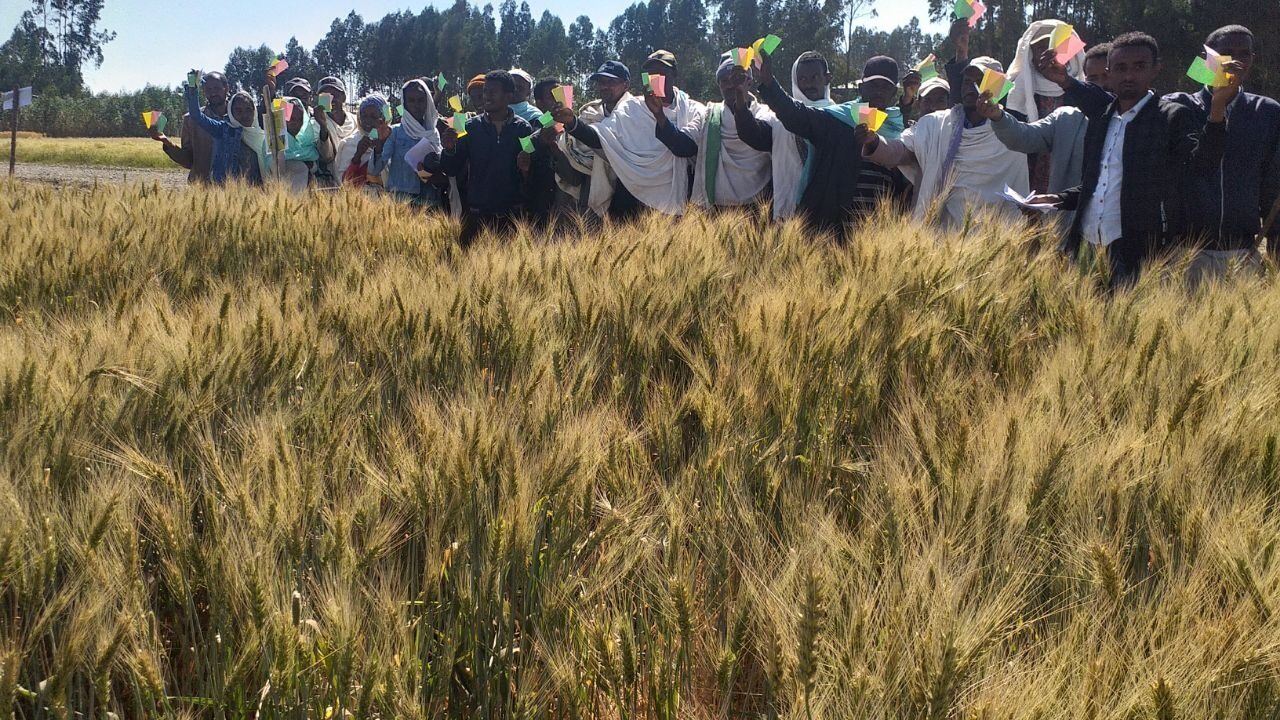
The results have been impressive. Compared to farms using traditional blanket fertilizer recommendations, farms using SSFRs showed significantly higher yields in over 75% of cases. SSFR led to an average increase in grain yield of 16% and 25% over NBFR and LBFR, respectively. Phorphorus and sulfur use efficiency were low with SSFR compared to the blanket recommendations. Furthermore, SSFR yielded profit gain of $580 USD per hectare per season over local recommendations and $412 USD over national blanket recommendations. This translates to increased food production, potentially feeding more Ethiopians, as well as to potential financial gains for farmers. By applying the right amount of fertilizer in the right place and season, they can improve resource efficiency and reduce negative environmental impacts. Farmers can save money by avoiding unnecessary fertilizer purchases, and they can minimize water and air pollution associated with excessive fertilizer use. Additionally, by using the right amount of fertilizer, they can help reduce greenhouse gas emissions that contribute to climate change.
The beauty of this machine learning approach is that it gets smarter with more data. As researchers gather more accurate and historical yield information, and incorporate data from diverse growing environments, the fertilizer recommendations can become even more precise. This ongoing research also holds promise for improving the predictive capabilities of the model, especially for nutrients such as phosphorus and sulfur, which can be particularly challenging to manage effectively.
This study demonstrates the exciting potential of artificial intelligence (AI) in transforming fertilizer use for wheat farmers in Ethiopia. By providing site-specific recommendations, researchers are paving the way for increased yields, improved resource efficiency, and a more sustainable future for Ethiopian agriculture. This approach not only benefits farmers and the environment, but also holds the potential to be adapted to support other regions across the world to optimize their fertilizer use and achieve greater food security.
Read the paper
Site-specific fertilizer recommendation using data driven machine approaches enhanced wheat productivity and resource use efficiency
The Team

José Luis Urrea-Benítez
Communications Specialist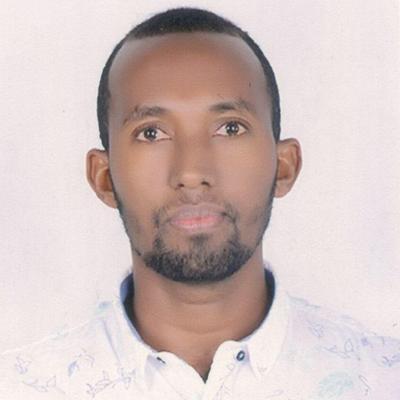
Feyera Merga Liben
Senior Research AssociateAcknowledgements
This research received support from the CGIAR Research Excellence in Agronomy Initiative (EiA), and the ‘Supporting Soil Health Interventions in Ethiopia’ project which is funded by the Bill and Melinda Gates Foundation and managed by the Deutsche Gesellschaft für Internationale Zusammenarbeit (GIZ).
Blog edited by José Luis Urrea-Benítez with inputs from Feyera Merga Liben, Team Leader and corresponding author of the study.

